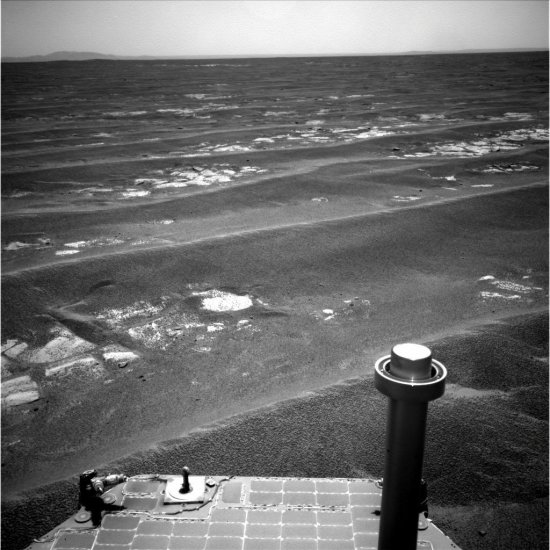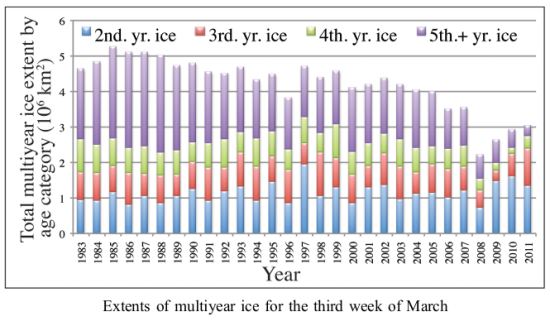Opportunity’s journey on Mars tops 20 miles
On July 17 the Mars rover Opportunity passed the twenty mile mark on its now seven year journey on Mars. The image below was taken on that day. In the distance, now only about 4,000 feet away, can be seen the rim of Endeavour Crater, fourteen miles wide. Opportunity has been traveling toward that crater now since 2008.
With the rover able to travel about 300 to 500 feet each sol, it should be reaching the crater’s rim sometime in the next few weeks.


